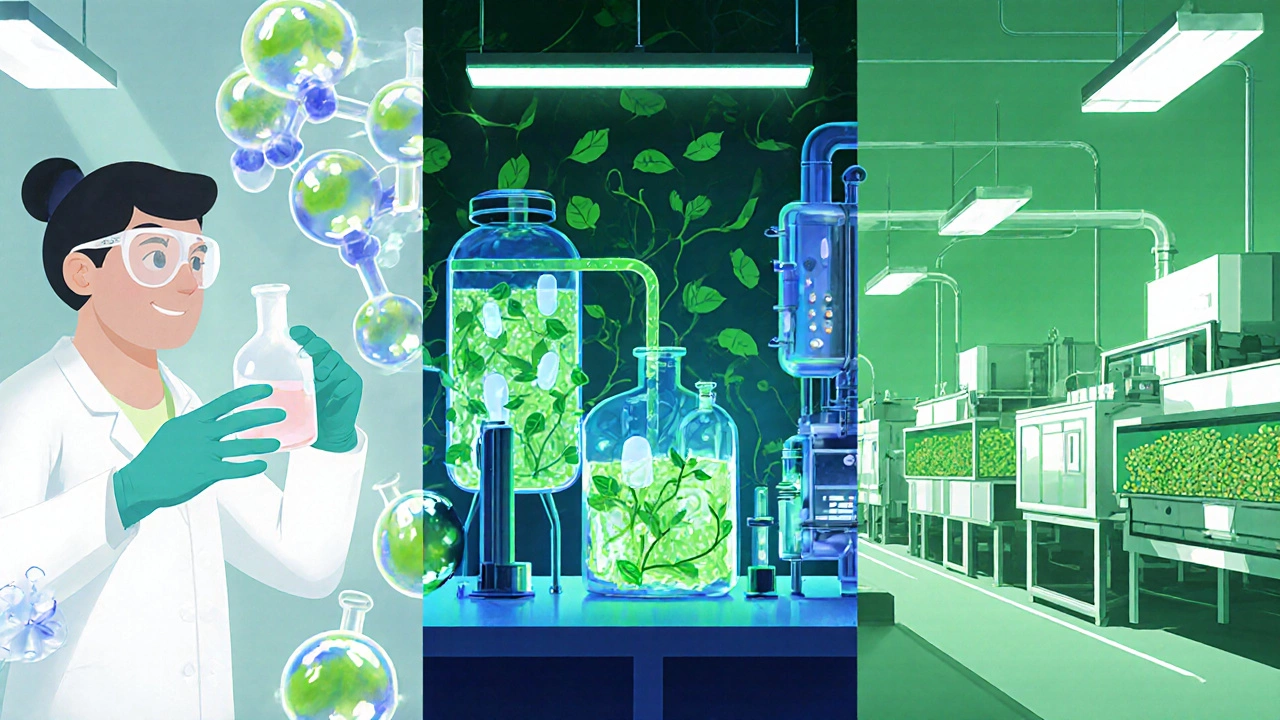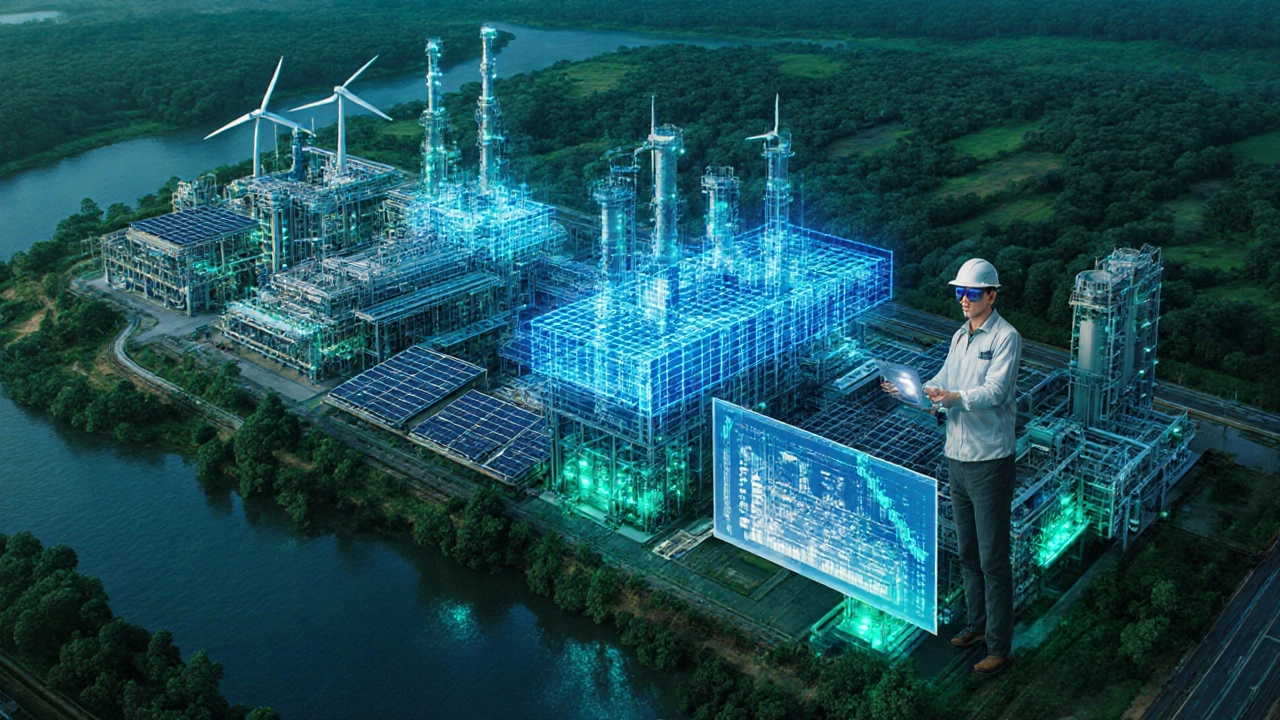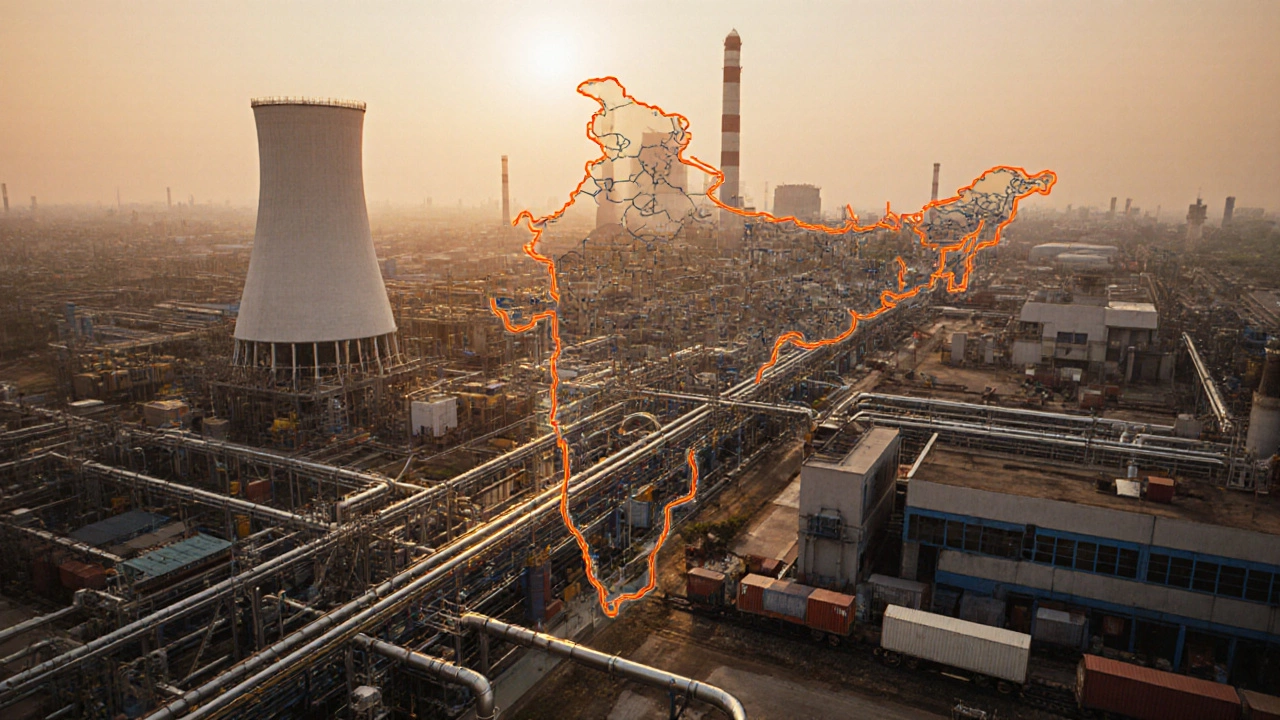Chemical Market Growth Calculator
Project India's Chemical Market Size
Calculate potential market value based on your choice of growth rate and time period. The current market size is $158 billion (2024 baseline).
Projected Market Value
When you hear the term chemical industry India, picture a massive web of factories, research labs, and logistics hubs that feed everything from medicines to smartphones. Chemical industry in India is a diverse sector that produces basic chemicals, petrochemicals, specialty chemicals, and polymers, supporting key downstream industries such as pharmaceuticals, agriculture, and construction. Its next decade will be shaped by policy pushes, shifting consumer demand, and a global swing toward greener processes.
Key Takeaways
- India’s chemical market is expected to grow at a 6‑7% CAGR through 2035, driven by domestic demand and export potential.
- Government programmes like Make in India and the National Chemical Policy 2023 will lower entry barriers for new players.
- Specialty and green chemicals offer the highest margin growth, outpacing traditional bulk chemicals.
- Feedstock import dependence and tighter environmental norms remain the biggest risk factors.
- Investors should focus on integrated value‑chain models, renewable feedstocks, and digitalisation for operational efficiency.
Growth Drivers Shaping the Landscape
The sector’s momentum comes from three intersecting forces. First, India’s population is set to cross 1.5billion by 2030, expanding the appetite for consumer goods, which translates into higher demand for polymers, dyes, and intermediates. Second, the government’s ambition to become a net‑exporter of chemicals means incentives for capacity expansion, especially in petrochemical complexes located in Special Economic Zones. Third, the surge in pharma and agro‑chemical R&D, fueled by companies like Reliance Industries and BASF India, pushes demand for high‑purity specialty chemicals.
Policy Landscape: Catalysts and Constraints
Since 2014, the Indian Government has rolled out a suite of schemes targeting the chemical sector. The Make in India initiative offers tax holidays and capital subsidies for setting up plants in under‑developed regions. The National Chemical Policy 2023 emphasizes:
- Development of green and bio‑based chemicals.
- Strengthening of domestic feedstock production (e.g., ethylene from coal‑based processes).
- Enhanced R&D tax credits for innovation in specialty chemicals.
While these policies lower capital costs, they also introduce compliance layers-particularly under the Environmental Protection Act amendments that mandate stricter emission standards for petrochemical clusters.

Emerging Segments with High Upside
Three niches are outpacing traditional bulk chemicals:
- Specialty chemicals: High‑value products such as surfactants, electronic chemicals, and pharma intermediates are projected to grow at 9‑10% CAGR. Companies like UPL are expanding R&D labs to capture this wave.
- Green chemistry: Driven by global ESG pressures, Indian firms are adopting bio‑based routes for solvents and polymers. The Green Chemistry market is expected to reach $3billion by 2032.
- Bio‑based polymers: With plastic bans tightening, bio‑polyethylene and polylactic acid (PLA) are gaining traction. Government grants for agricultural waste conversion are feeding this segment.
Challenges That Can Stall Growth
Despite the optimism, several headwinds could dampen progress:
- Feedstock reliance: Over 80% of India’s petrochemical feedstock is imported, making the sector vulnerable to global price swings and currency fluctuations.
- Environmental compliance costs: New effluent standards and solid waste rules are increasing operational expenses, especially for older plants.
- Skill gap: Advanced process control and green‑technology expertise are scarce, prompting companies to compete for a limited pool of qualified engineers.
Addressing these issues will require coordinated action between industry bodies like the Indian Chemical Council and state governments.

Investment Outlook and Financial Projections
Analysts at major consultancies forecast the overall chemical market to reach $220billion by 2035, up from $158billion in 2024. The table below breaks down the expected compound annual growth rates (CAGR) for key segments.
| Segment | CAGR (%) | Key Growth Driver |
|---|---|---|
| Basic chemicals | 5.2 | Infrastructure spending |
| Petrochemicals | 6.0 | Feedstock diversification |
| Specialty chemicals | 9.5 | Pharma & electronics demand |
| Green chemicals | 11.3 | ESG regulations |
| Bio‑based polymers | 12.0 | Plastic‑ban policies |
Top players like Reliance Industries, BASF India, and UPL are eyeing M&A to secure technology licences and expand downstream integration. Private equity funds have already allocated $2.5billion into Indian chemical ventures since 2022, signaling strong confidence.
Strategic Recommendations for Stakeholders
Based on the trends above, here’s a quick playbook:
- Invest in integrated value chains: Coupling feedstock production (e.g., coal‑to‑ethylene) with downstream specialty units reduces import exposure.
- Adopt digital twins and AI‑driven process optimization: Early adopters report up to 15% energy savings and lower emissions.
- Focus on green product portfolios: Positioning as an ESG‑compliant supplier opens doors to multinational OEMs.
- Leverage government incentives: Tap into capital subsidies for setting up units in under‑developed states like Odisha and Jharkhand.
- Build talent pipelines: Partner with engineering colleges for curriculum designed around advanced catalysis and bio‑processes.
Frequently Asked Questions
What is the projected size of India’s chemical market by 2035?
Industry analysts estimate the market will reach roughly $220billion by 2035, reflecting a CAGR of about 6‑7% from the 2024 baseline.
Which government schemes directly benefit new chemical plants?
The primary schemes are Make in India (tax holidays, capital subsidies) and the National Chemical Policy 2023, which offers R&D credits and feedstock incentives.
Why are specialty chemicals considered the most attractive segment?
Specialty chemicals command higher margins, have faster innovation cycles, and are less exposed to bulk commodity price volatility, making them a preferred growth engine for both domestic and export markets.
How can companies reduce dependence on imported feedstock?
Investing in coal‑to‑olefins plants, developing bio‑based feedstock routes, and forming strategic alliances with upstream producers are the most effective strategies.
What are the biggest regulatory risks ahead?
Tighter emission norms under the Environmental Protection Act, and increasingly strict hazardous waste handling rules could raise compliance costs for existing facilities.
